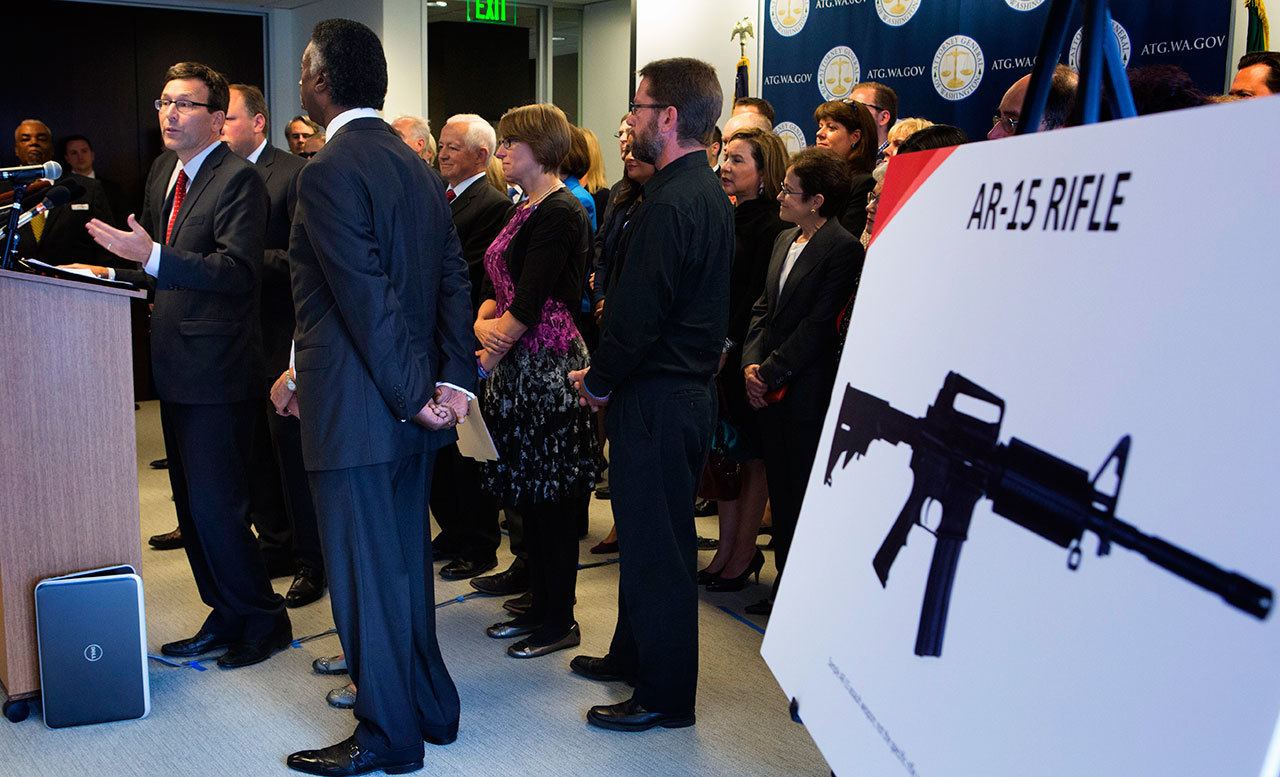By The Herald Editorial Board
We tell ourselves this with every tragedy linked to gun violence: There are people who should not have access to firearms.
The struggle comes in keeping guns and other firearms out of the hands of those who shouldn’t have them without infringing harshly on the rights of responsible people to own them. But the type of weapon and their potential lethality also matters.
Allen Ivanov, the 19-year-old Mukilteo man who gunned down his ex-girlfriend and two other Kamiak High School graduates and injured a fourth on July 30, should not have been able to buy a AR-15-style semi-automatic weapon. Washington state’s laws, as written, allowed that purchase, but would have prevented him from buying alcohol. Likewise, current law would have allowed him to own a handgun but only if kept at home or his place of business.
Washington State Attorney General Bob Ferguson and two Democratic legislators are proposing legislation that would bar the sale of semi-automatic military-style weapons and would limit the capacity of ammunition magazines to 10 rounds. Ivanov carried a weapon that reportedly used a magazine with 30 rounds.
At a news conference Wednesday, Ferguson talked pointedly about the Mukilteo mass shootings:
“The recent tragedy in Mukilteo drives home the need to act with urgency to end the availability of weapons designed with only one purpose — to kill people,” Ferguson said. “I have a duty to protect the public, as well as uphold the Constitution. My proposal will ban some of the deadliest weapons, while respecting the Second Amendment right to bear arms.”
Although the legislation has yet to be drafted, Ferguson said it will bar the sale of the weapons; current ownership of weapons will be grandfathered, but their sale and transfer would be prohibited.
The Legislature has balked at other gun safety legislation in recent years, but Ferguson may have public support behind him. A joint survey by Washington Ceasefire and Ceasefire Oregon found that 65 percent of adults in both states supported an assault weapon ban and 63 percent supported a ban on magazines larger than 10 rounds.
A nationwide ban passed Congress in 1994, but expired in 2004. Seven other states and the District of Columbia have bans of assault-style weapons and the U.S. Supreme Court upheld a ban in a Chicago suburb and declined to review lower court decisions that upheld such bans in New York and Connecticut.
Since the end of the federal ban each side of the gun control issue has debated its effectiveness and have cherry-picked data and conclusions from a 2004 study of the federal ban by Christopher Koper, who is now an associate professor at George Mason University’s Department of Criminology, Law and Society.
In a 2013 article by FactCheck.org, the NRA’s Wayne LaPierre said Koper’s study showed the ban had had no impact in lowering crime, while Sen. Dianne Feinstein, D-California, said the study showed the opposite, that the ban had been effective in reducing crime.
Instead, FactCheck noted, the law’s success in reducing crimes committed with banned guns had been mixed but for reasons that should inform the current discussion about Ferguson’s proposed legislation.
Koper’s study found that there had been some reduction in crimes involving assault weapons, but those reductions had been offset by the rising use in the 1990s of guns of all types equipped with high-capacity magazines. And the potential impacts of the ban were difficult to assess because the federal ban grandfathered the possession of existing weapons, leaving an estimated 1.5 million assault weapons in place as well as 25 million to 50 million large-capacity magazines.
That supply of weapons and the ban’s end after only 10 years potentially limited the effectiveness the federal ban might have had. One wonders what the statistics might have shown now if the ban had not ended more than 10 years ago.
Semi-automatic assault-style weapons and high-capacity magazines are designed to shoot more rounds than handguns and hunting rifles. They result, FactCheck quotes Koper, in “more shots fired, persons hit and wounds inflected than do attacks with other guns and magazines.”
Critics of the legislation will argue that assault-style weapons should be allowed for sport and self-defense, but by that argument you could justify the possession and sale of automatic weapons, which are currently banned. The weapons are designed after those in use by the military, and should be reserved for that purpose.
We can’t know if an assault-weapon ban and a ban on large-capacity magazines would have prevented Allen Ivanov from getting access to a weapon and committing the murders that are alleged. But it might have made it more difficult; it might have provided time for someone to intervene.
And we might not now be asking, “Why?”
Talk to us
> Give us your news tips.
> Send us a letter to the editor.
> More Herald contact information.

























